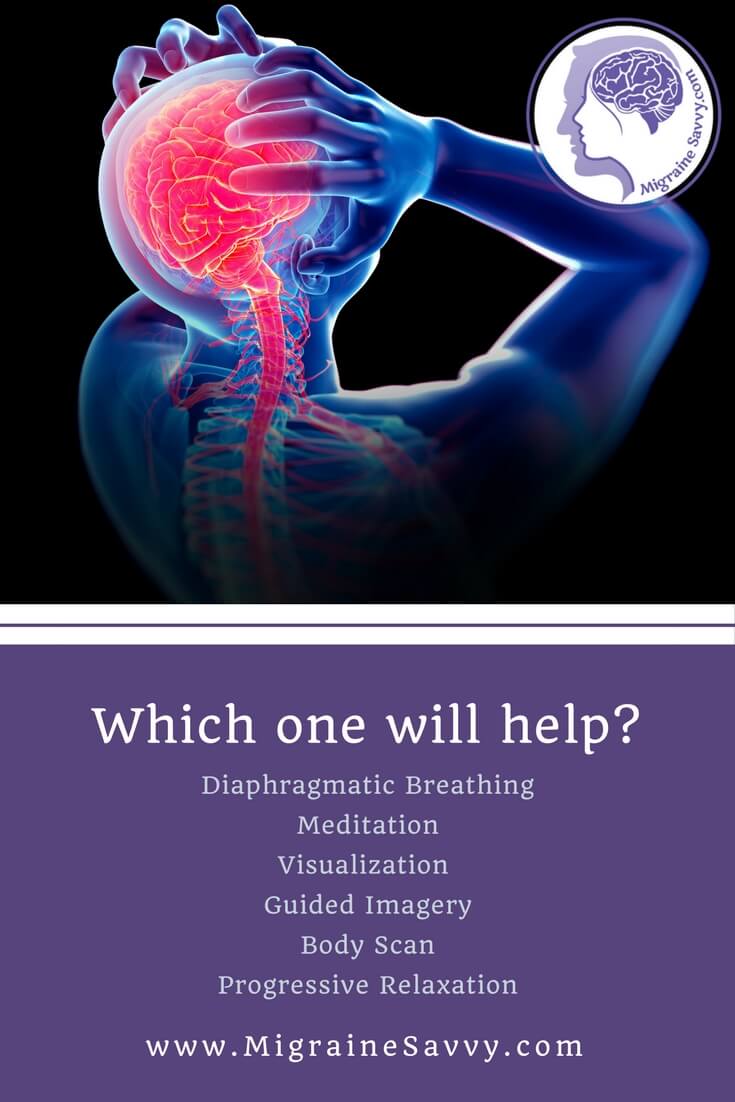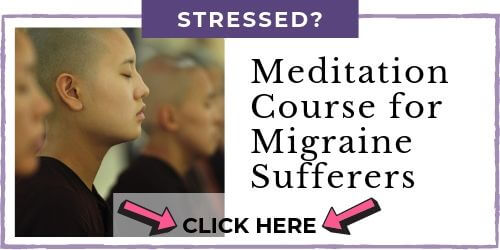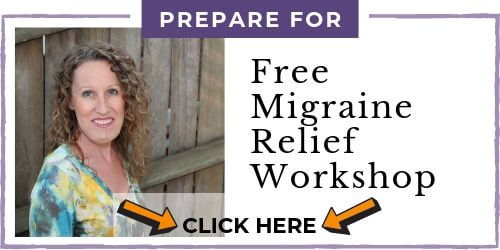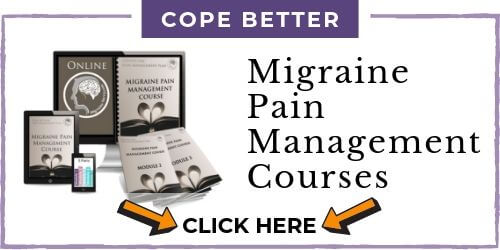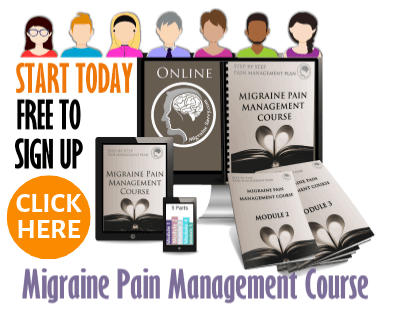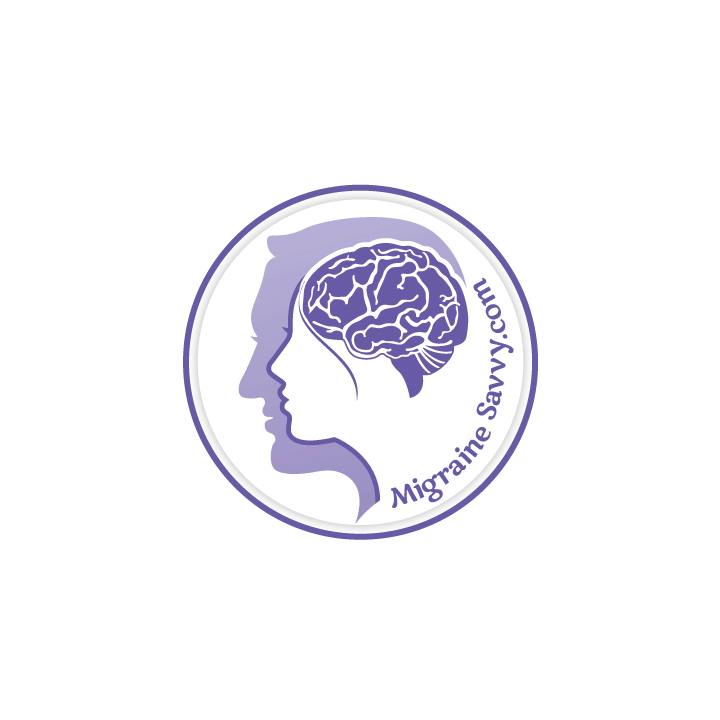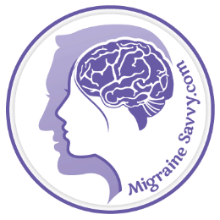- Home
- Meditation
- Meditation and Migraines - Your Questions Answered
COMPLETE MAGNESIUM SUPPORT
My Top Choice - Magnesium Breakthrough - The ONLY supplement with all 7 essential magnesium types in one formula. Most only have 1-2 types, leaving you deficient.
Meditation and Migraines
Your Questions Answered
What do meditation and migraines have to do with each other? Meditation is proven to help reduce stress and migraine attacks.
Learning to meditate can help you to manage not only the pain from migraines, but all the stressful events that life can throw at you.
Below I answer some of the most common questions I've been asked so you can get started now on finding better pain relief.
The research proves migraine reduction and promises of better health, but what about secret mantras and special rules that come with some methods.
Is meditation hard to do?
To answer that one right off the bat, yes... and no! Some methods are harder to learn than others, and some find it easy while others find it difficult.
Guided visualization, breath awareness, or guided meditations are the easiest for me before an attack. But doing (TM) Transcendental Meditation regularly (away from attacks) or any other regular meditation practice can have many benefits as well.
So let me help you make it all easier with some basic details and give you some links to what I have found to work most effectively for me and my painfully relentless migraines.
What actually happens to my mind and my body when I meditate?
I get asked this mostly from teenagers that are uncomfortable closing their eyes and know very little about the benefits of meditation and migraines.
The purpose of meditating is to achieve this silent and peaceful level of contentment... to come to your quiet calm innermost self in a state of restful alertness where your focus achieves mental clarity and your body enjoys deep rest.
On a scientific level, the left and right hemispheres of the brain synchronize, the cardiovascular system slows down, breathing relaxes and expands, and this gives the body a deep rest. In other words, it calms the autonomic nervous system and encourages rest, digest, heal and sleep.
Here is a more detailed post on the science behind meditation and migraines.
My #1 Choice in Magnesium Supplements
What is the best form of meditation for relieving migraines?
There are many kinds of meditations: chanting, diaphragmatic breathing, visualization, guided imagery, body scan and progressive relaxation, just to name a few.
I favor any kind of breathing awareness combined with focusing or soothing, relaxing guided meditations. Check out this headache music page for a list of ones I love to use.
Meditation techniques generally fall into these three forms:
Focused attention: your focus is on a single object - your breath, a mantra, visualization, body part, or external object. Examples are: buddhist, loving kindness, chakra, kundalini and other yoga meditations, sound, mantra, pranayama, some forms of Qigong, just to name a few.
Open attention: you focus on monitoring all that comes into your awareness, without judgement. Examples are: mindfulness, Vipassana, and some types of Taoist meditation.
Self in presence. Focusing uses this technique. "I am" meditation is another example.
The best meditation is the meditation that works for you.
The most researched method of meditation to date is Transcendental Meditation (TM). It entails repeating your unique mantra, for 20 minutes twice a
day. It is the most examined, most widely practiced method and is said
to be:
the “most effective method of self-development” around (tm.org).
The
TM technique of silently repeating your mantra allows your mind to
settle down, clear its thoughts and constant processing, to be able to
observe the deeper or true source of your thoughts. This pure awareness
is known as “transcendental consciousness” (ibid.).
I find both TM and Vipassana to be quite effective methods of meditating AWAY from the pain phase, but not during. Guided is the way to go during an attack if you are not too sensitive to sound.
Using imagery is much easier. Try this... close your eyes... take 3 deep breaths and...
Put your pain in a box, small or large, decorative or plain... close the lid and tie it with a blue ribbon. Let it float away. Up and up, smaller and smaller it gets, until you can no longer see it.
Take your time with this and imagine all the details you can.
Is it hard to learn?
All the sources say that anyone can learn to meditate.
I, on the other hand, am not convinced that it is that easy to silence the mind... especially with an attack looming. But it is possible with time to change... you might be familiar with the new science around the neuroplasticity of the brain.
You can train your brain (click on this link).
The techniques are simple, so children as young as five years old can learn and practice meditation and even transcendental meditation without any difficulty.
Children between 5 and 10 years of age are not expected to close their eyes to meditate, and they only meditate one minute for how old they are. So a five year old would meditate for 5 minutes, an 8 year old for 8 minutes, etc.
And if they use a mantra like in TM, their words are special
“words of wisdom™” rather than a mantra, but it is used in the same
fashion.
 Meditation and migraines. Anyone can learn to meditate @migrainesavvy
Meditation and migraines. Anyone can learn to meditate @migrainesavvyTo help you learn how to meditate you can use CD's or instant downloads. They all need to be tweaked for migraines.
But you don't have to do that! I have a whole section on meditation and migraines for you to practice with and a course. Here are the links:
How long each day?
20 minutes twice a day is recommended for the best results.
But any time you can manage will be beneficial to just stop, breathe and tune in.
Rick Hanson suggests a few minutes, (10-12-20 seconds even) several times a day... they all add up for more effective stress relief.
I prefer doing a guided meditation for 25 minutes to half an hour, twice a day. And then for as long as it takes before and during an attack... which could be days.
It's a great distraction for that natural brain negativity bias.
What is the best time of day to practice?
Early in the morning and before going to bed are the best times.
It's best to pick the same times each day and stick to them where possible. This will help you to form a daily routine and maintain a regular practice.
Outside your regular routine, doing your meditation practice at your earliest warning sign that a migraine is on its way is the best time. Timing is crucial with aborting migraines!
How long will it take me to get it, not just learn it?
You can learn the guided meditations right away. However, how long it takes for you to find inner peace and quiet your mind will just take the time it takes you. You should feel calmer instantly before a migraine if you get your timing right.
The TM courses are normally 3 or 4 days in a row. You can obtain information about how to do Transcendental Meditation and learn the philosophies and practice the method with your assigned mantra both in session with the guru and at home.
They say you will get
it in a weekend, but it took me a bit longer to actually be able to
focus enough on this new word and to clear my busy mind.
How long before I see the benefit(s)?
It is different for everyone, but most people see the results
immediately. The benefits accumulate over the years of practice.
How much does it cost?
That depends on what method you want to start with. The price of a CD or a local course will vary, but pretty cheap considering what other things cost for pain management! Meditation and migraines is definitely a cheaper choice than say physiotherapy or chiropractors.
For TM when I went along a number of years ago, the cost was $1,000.00 for the weekend instructions. The courses may vary in cost according to country, but the weekend intensives are not what I consider cheap.
The course also has levels, and further costs are incurred for higher teacher training levels.
I believe, in most cases, there is a 6 month follow up course of meetings that are free. The forums are also free. So it depends on value for money. Millions think it's well worth it.
What if I can’t cross my legs or sit unaided?

That’s fine - you can sit in a chair or lie down. Although one tends to fall asleep when laying down, so sitting is preferred.
As long as your spine is straight and comfortable.
You can meditate on a train, bus or anywhere you can sit down.
Meditation and migraines is best done laying down so you can drift off to sleep. Sleep is a great migraine aid.
Is transcendental meditation better than other forms of meditation?
Not necessarily. Richard Castillo’s (1990) research found that 70% of young people experienced episodes of depersonalization and concluded that:
"the
depersonalization and derealization experiences of novice subjects
while meditating by gazing at a blue vase are strikingly similar to the
experiences reported by TM meditators."
Will meditating reduce my migraines?
A 2008 study showed "72
percent of the participants experienced fewer migraines, developed a
higher pain tolerance, less anxiety and a higher level of headache
related self-efficacy and overall sense of well-being." [2]
And another that had the pain reduction of 57 per cent illustrated by an MRI.
All participants in most studies were able to reduce their chronic pain by 50 - 72 per cent.
~ Cynthia Perkins
Meditation and migraines... can it cure my migraines?
Even with all the health benefits, it's not a cure all.
Many people critique TM and the whole TM movement. This study of Castillo's, and having now researched other critics, leads me to see both sides of TM.
There are both positive and negative (costs a lot of money) aspects to consider.
My conclusion is that deeper awareness or higher levels of consciousness can be reached by finding the form of meditation that suits your migraines best!
Learning your tipping point, your timing is essential to abort attacks effectively.
Learning that and combining meditation and migraines could change your life.
It changed mine!
I hope you experiment with meditation and migraines... and enjoy great success in reducing your attacks.
Stay well, and be pain free.
Hx
More ways I can help
WANT MORE TIPS? Subscribe to my newsletter and follow along on Facebook and Pinterest for all of the latest updates.
MIGRAINE MEDITATIONS Related Articles
How to be more MIGRAINE SAVVY right now...
Meditation and Migraines Links:
1. UCLA Free Guided Mindfulness Meditations
2. Perkins, C. (2012) Mindfulness Over Migraines. Cynthia Perkins Self Published: USA.
